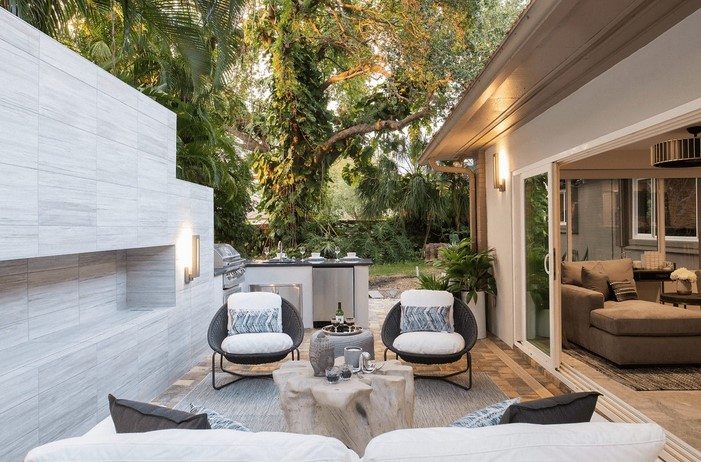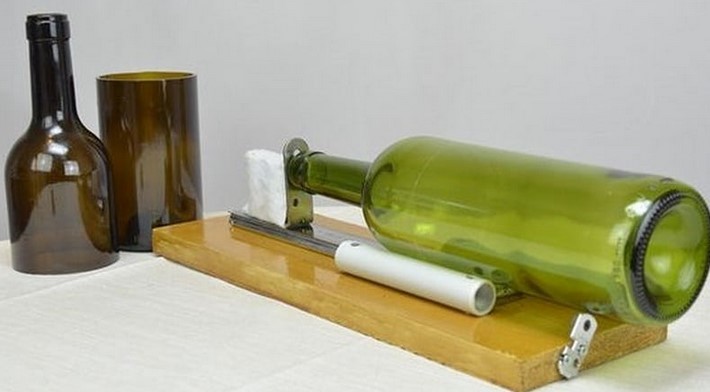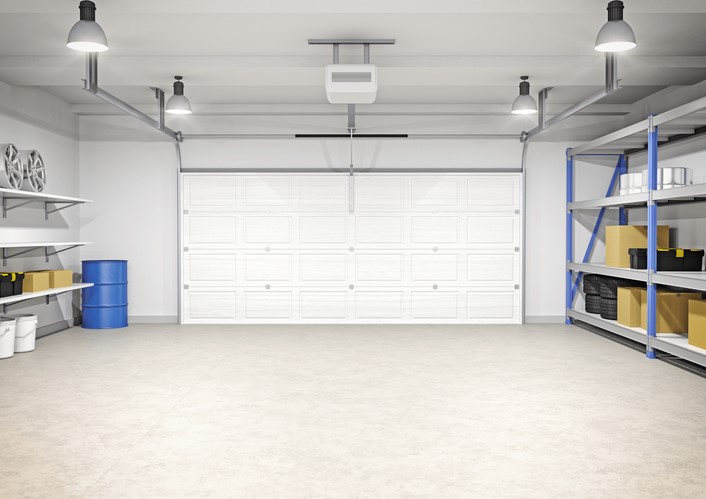
When it comes to upgrading your garage, most people think of adding shelves, improving storage solutions, or installing a new garage door. However, one often overlooked yet highly impactful upgrade is smart garage lighting systems. A well-lit garage isn’t just about visibility; it’s also about enhancing safety, improving energy efficiency, and creating a functional environment for all sorts of activities, from DIY projects to parking your car. Smart garage lighting offers a solution that goes beyond traditional lighting fixtures. By integrating modern technology with energy-efficient solutions, these systems provide convenience, automation, and energy savings, transforming your garage into a space that works smarter, not harder.
The Benefits of Smart Garage Lighting Systems
1. Energy Efficiency and Cost Savings
One of the most significant advantages of installing smart garage lighting systems is the energy savings they offer. Traditional garage lights often rely on incandescent bulbs or standard fluorescent lighting, which can waste a lot of energy and increase your utility bills. Smart lighting systems, however, use energy-efficient LED bulbs, which consume far less energy while providing the same, if not better, illumination.
Furthermore, smart lighting systems can be programmed to turn off automatically when they’re not needed. For example, if you forget to switch off the lights after a project, the system can be set to turn off after a specified period. You can also control the lighting remotely using your smartphone or voice assistants like Amazon Alexa or Google Assistant, ensuring that the lights are always on or off when they’re supposed to be, without wasting energy.
2. Improved Safety and Security
In terms of safety, well-lit garages are essential, especially if you’re working with tools, performing maintenance, or simply storing valuable items. Smart lighting systems can enhance visibility in key areas of your garage, ensuring you never have to fumble around in the dark.
But safety isn’t limited to lighting the workspace; smart garage lighting systems can also increase security. Many smart lighting systems come with motion sensors that detect movement in your garage. If the system senses any activity, it can automatically turn on the lights, alerting you to any potential security breaches. Additionally, you can set the lights to turn on and off at different intervals, giving the illusion that someone is home, which is an effective deterrent to burglars.
3. Customization and Automation
Another standout feature of smart garage lighting systems is the ability to customize and automate your lighting preferences. With a simple app or voice command, you can adjust the brightness of the lights, change their color temperature, and even create different lighting scenes based on the activities you’re performing. For example, you might want bright, cool light when you’re working on a car repair, but warmer, softer light when you’re hosting a garage party or gathering.
Automating your lights is also a huge convenience. You can set schedules for when the lights should turn on or off, ensuring that your garage is lit up as soon as you arrive home. Additionally, with geo-fencing technology, your lights can automatically turn on when your smartphone detects that you’re nearby, and turn off when you leave, providing both convenience and energy savings.
Key Features to Look for in Smart Garage Lighting Systems
When considering a smart garage lighting system, it’s important to look for certain features that will best meet your needs and provide the most value. Here are some key aspects to consider:
1. Motion Detection
Motion detection is a key feature in many smart lighting systems. It helps save energy and ensures that the garage is always properly illuminated when you need it. Motion sensors are perfect for areas where you might not always remember to turn the lights off, or if you tend to enter the garage with your hands full. These sensors can detect movement and activate the lights, making the garage safer and more convenient to use.
2. Voice Control Integration
Voice control integration with smart home assistants like Amazon Alexa, Google Assistant, or Apple HomeKit is another valuable feature. With just a simple voice command, you can turn the lights on or off, adjust brightness, or change the color temperature of the lights without lifting a finger. This is especially useful when you’re busy with hands-on tasks like car repairs or organizing your garage.
3. App Control and Scheduling
The ability to control your garage lights remotely through an app adds a layer of convenience. You can turn the lights on or off even when you’re not home. Scheduling your lights to automatically turn on and off at specific times is another way to ensure that your garage is well-lit when needed and energy-efficient when not in use. Many apps also allow you to create different lighting scenes, so you can customize your garage’s ambiance for various activities, whether you’re working, relaxing, or hosting guests.
4. Energy Monitoring
Some advanced smart garage lighting systems come with energy monitoring features, allowing you to track how much energy your lights are using. This feature can help you make informed decisions about your energy consumption and identify areas where you can reduce waste. Over time, this data can help you further optimize your garage’s lighting for maximum efficiency.
How to Install and Set Up a Smart Garage Lighting System
1. Choosing the Right Lights
Start by selecting the type of smart light bulbs or fixtures you want to use in your garage. Depending on your needs, you might choose LED smart bulbs, smart ceiling lights, or smart light strips. Ensure that the bulbs you select are compatible with your existing setup, whether that means a compatible light socket or a smart hub for controlling multiple lights.
2. Install the Lights
If you’re replacing existing fixtures, the installation process is fairly straightforward. For bulb replacements, simply screw in your smart bulbs in place of the old ones. For ceiling-mounted lights or more complex installations, you may want to consult an electrician, particularly if you plan to incorporate motion sensors or integrate the system into a larger smart home network.
3. Connect to Your Smart Home System
Once your lights are installed, you’ll need to connect them to your smart home system. This typically involves downloading the manufacturer’s app, creating an account, and following the prompts to pair the lights with your Wi-Fi network. For more advanced setups, you may need to connect the lights to a hub or other smart home integration platform.
4. Customize Your Settings
Finally, once everything is set up, you can begin customizing your lighting preferences. Adjust the brightness, schedule your lights to turn on or off, and experiment with motion sensor sensitivity. The beauty of smart garage lighting systems lies in their flexibility, so feel free to create a lighting setup that works for your specific needs.
Upgrading your garage with smart garage lighting systems offers a combination of efficiency, convenience, and security that traditional lighting simply cannot match. By selecting energy-efficient LEDs, integrating motion detection, and automating your lighting with smart technology, you can ensure that your garage is always well-lit, secure, and easy to use. Whether you’re working on a project, parking your car, or just looking for a way to improve the ambiance of your garage, a smart lighting system can make all the difference. Not only does it enhance your garage’s functionality, but it also contributes to a more sustainable, energy-efficient home. Make the switch today and experience the benefits of a smarter, brighter garage.
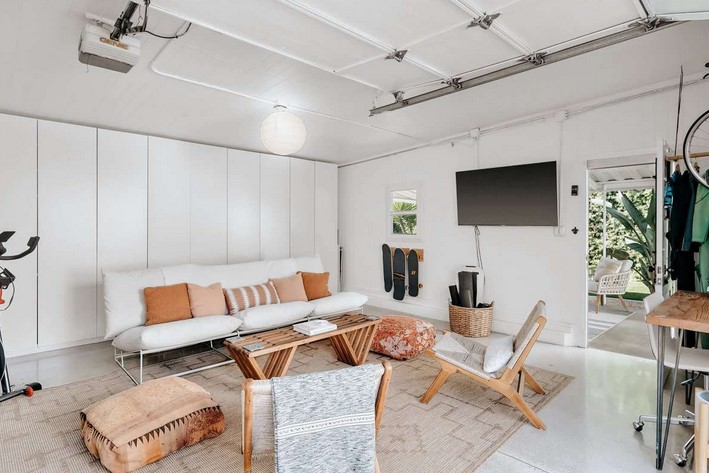

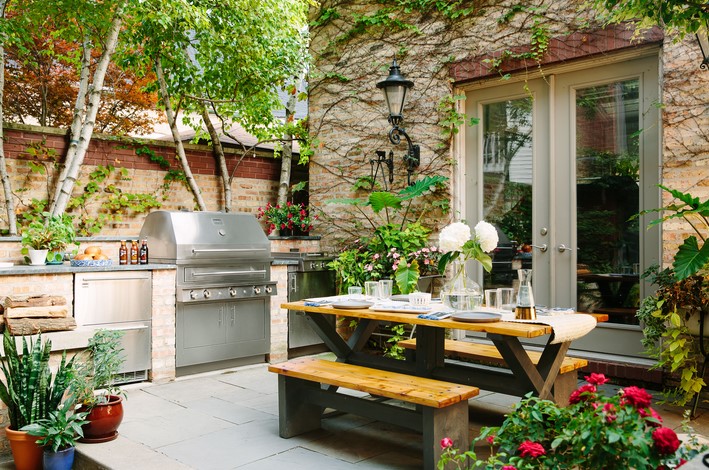
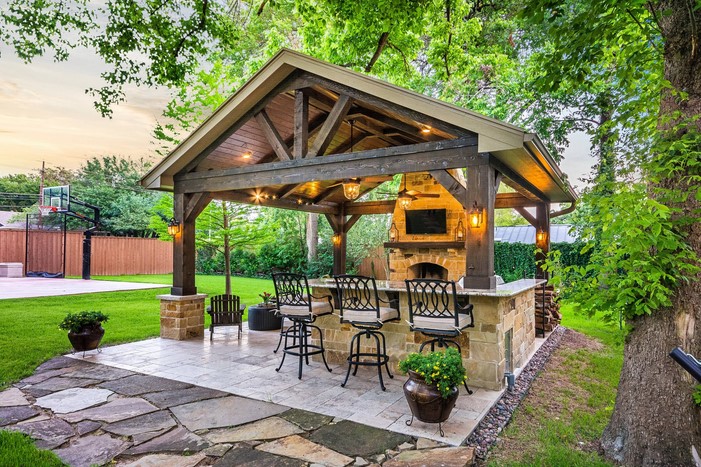 Incorporating stone patio designs into your outdoor living space can transform your backyard into a luxurious and durable environment for relaxation and entertainment. Stone patios not only add visual appeal but also enhance the functionality of your outdoor area. Whether you’re looking to host summer barbecues, enjoy a peaceful evening outdoors, or simply create a functional space for everyday living, stone patios provide the ideal solution. With a wide range of stone options and design ideas available, choosing the right style and materials can be an exciting yet overwhelming task. This article delves into the benefits of stone patio designs, various materials to consider, and the key considerations for creating a beautiful and long-lasting outdoor living space.
Incorporating stone patio designs into your outdoor living space can transform your backyard into a luxurious and durable environment for relaxation and entertainment. Stone patios not only add visual appeal but also enhance the functionality of your outdoor area. Whether you’re looking to host summer barbecues, enjoy a peaceful evening outdoors, or simply create a functional space for everyday living, stone patios provide the ideal solution. With a wide range of stone options and design ideas available, choosing the right style and materials can be an exciting yet overwhelming task. This article delves into the benefits of stone patio designs, various materials to consider, and the key considerations for creating a beautiful and long-lasting outdoor living space.



